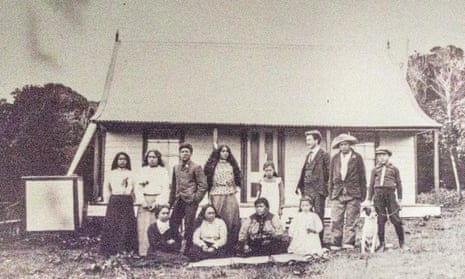After more than 150 years of struggle for justice, truth and reparation, the Moriori people of Rēkohu, or the Chatham Islands, can turn a new leaf on the history book that rewrote their story and taught generations of New Zealanders they were an inferior race that was now extinct.
Moriori were the first settlers to the archipelago, 800 kilometres east of New Zealand, between 600 and 1,000 years ago and developed a distinct language, customs and culture before they were nearly wiped out.
On Tuesday, the New Zealand government enshrined in law a treaty between Moriori and the Crown, which includes an NZ$18m (£9.3m) settlement, the return of land, and an apology acknowledging the wrongs Moriori have suffered since the arrival of Māori and Europeans to their shores.
“It’s a celebration for me and there was definitely a buoyant feeling in the room … that it’s actually going to become the law of the land and pretty much set in stone – that’s a significant milestone in our history,” Moriori leader Maui Solomon said.
“We’re a people that has vision, determination, and resilience. And by adhering to our own philosophy of peace and inclusivity, we’ll certainly stand up for our rights and not be pushed around and bullied any more.”

Solomon’s ancestors began the fight for justice long before him, but he has been instrumental in moving a settlement forward. For nearly 40 years, he has led the fight for reparation, first filing a claim on behalf of the imi (tribe) in 1988, which culminated in this week’s bill being passed.
“We’ve spent the last 20 or 30 years getting the hardware sorted out, the resources, and getting some land and assets back, but the real work now starts in developing the software and installing that into our people,” he said.
The minister for Treaty of Waitangi negotiations, Andrew Little, said the law’s passing was a special moment for Moriori.
“It’s a testament to the years of hard work by Moriori and dedication to negotiating a deed of settlement and a long awaited day of celebration.”
Alongside the financial reparations and apology, the settlement includes an agreed account of the Moriori history, a necessary step in correcting the myths and narratives the Crown disseminated over many generations.
Moriori had a pacifist philosophy which chief Nunuku-Whenua introduced to his people around the 16th century. The covenant of peace banned rank, violence and warfare. The imi lived undisturbed for many centuries until their first contact with European settlers in 1791, who arrived on the HMS Chatham, bringing with them diseases and the start of a new colonial era.
“In late 1835, about 900 people of two mainland Māori tribes sailed on a British ship to Rēkohu … the newcomers were welcomed and fed by Moriori in accordance with tikane Moriori (Moriori custom). Some Moriori wanted to resist the invaders, but the elders…urged the people to obey Nunuku’s law of peace … Upon returning to their villages they were attacked, and many were killed. Māori accounts put the number of Moriori killed in 1835–36 at about 300, or about one-sixth of the population. Those Moriori who survived the invasion were enslaved and forced to do manual labour,” the official account of Moriori history states.
By 1901, the Moriori population on Rēkohu had collapsed from a pre-contact population of about 2,000 to only 31.

In the early 20th century, prominent ethnographers wrongly portrayed Moriori as extinct and racially distinct from, and inferior to, Māori. The Crown contributed to the dissemination of this myth through the publication of the School Journal, which taught generations of New Zealand schoolchildren that Moriori were an inferior race who had occupied New Zealand prior to the arrival of Māori and had been driven out to the Chatham Islands by the later migrants. These myths caused much damage to Moriori and is rhetoric that has been used to justify European colonisation.
It’s estimated there are now between 3,000 and 6,000 people of Moriori descent.
Rāhiri Edwards-Hammond, 20, recently completed her dissertation in contemporary Moriori identity, and says having the Crown finally acknowledge the history is important but is just the first step towards reconciliation.
“The fact that our stories are coming to light, and people are showing interest is huge. The majority of our population don’t know the Moriori.”
“The first thing for me, on a personal level, but also on a wider cultural level, it’s just getting to know ourselves again, relearning our history, sharing our history, it’s creating new things.”
This includes revitalising culture and language, using modern technology. Recently, the first Moriori songs were uploaded to Spotify, and a new app called Ta Rē Moriori aims to teach people the basics of Moriori language.
Many generations of Moriori have lost their connection to their culture, Edwards-Hammond said, and now is a time for the country to learn and evolve.
“[This] is the opportunity for all of us to learn about the origins of this country, the colonial violence of this country, and the more that we come to accept all the parts of our history, I think the easier it’ll be for us to move forward and actually seek that reconciliation.”
